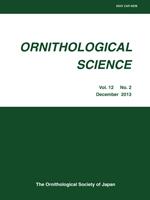Binomial mixture models (BMMs) have been increasingly applied to account for imperfect detection and to estimate abundance from count data, but their performance has not been thoroughly evaluated. Here, I conducted simulation experiments to examine parameter estimates in BMMs under various situations. I generated data by assuming that abundance followed a Poisson distribution with an expected value λ and that the number of detected individuals followed a binomial distribution with an individual detection probability p. In simple simulations without covariates for λ and p, when the number of sampling sites (n) was between 20 and 160, BMMs could recover λ and p under the following conditions: 0.1≤λ≤160 and p≥0.1. However, within these ranges of λ and p, the estimates were variable under lower values of λ and p, although the situation improved as n increased. When λ and p are expected to exceed these ranges and the sample size is small, the results suggest that sampling and/or modeling designs should be reconsidered. I then conducted simulation experiments with covariates. I assumed that λ increased with a covariate (x) across 20 sampling sites. I varied p, number of visits (v), and their dependency on a covariate. To compare BMMs with analyses that did not accommodate imperfect detection, I fitted ordinary Poisson generalized linear models to mean and maximum counts (GLMmean and GLMmax). The results showed that GLMmax was superior to GLMmean because GLMmean underestimated λ when p was small. GLMmax underestimated a coefficient of the covariate (slope) when v was negatively correlated with x. BMMs successfully recovered true values of the intercepts, slopes, and λ in most cases. However, when p and v were small, and when p and λ were highly negatively correlated due to their inverse dependency on x, estimates from BMMs were more variable.
How to translate text using browser tools
1 December 2013
Confronting Imperfect Detection: Behavior of Binomial Mixture Models under Varying Circumstances of Visits, Sampling Sites, Detectability, and Abundance, in Small-Sample Situations
Yuichi Yamaura
ACCESS THE FULL ARTICLE

Ornithological Science
Vol. 12 • No. 2
December 2013
Vol. 12 • No. 2
December 2013
Count data
False negative
Generalized linear model
Hierarchical model
N-mixture model




